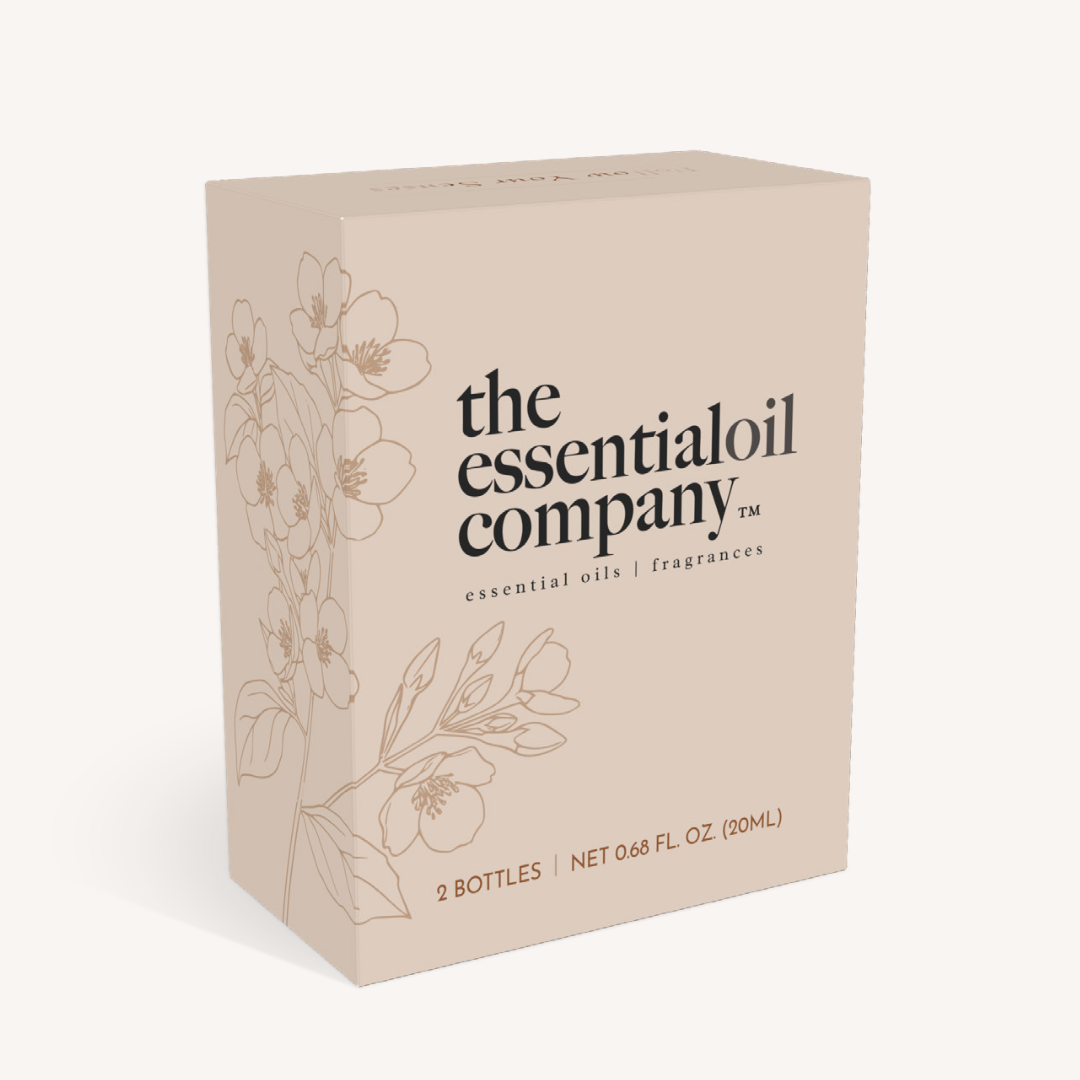Bergamot may be one of the lesser-known citrus essential oils but it is an extremely versatile oil that is packed with numerous benefits. It also offers a sweet, fresh, and slightly zesty aroma that makes it truly unique among the other citrus oils.
Plant Details
Bergamot (Citrus bergamia). Bergamot is cultivated for essential oil production. Bergamot is commonly grown by grafting Bergamot tree branches onto Bitter Orange trees. Around 3 years after the branches are grafted, they will begin to produce fruit. The Bergamot flower is a small delicate, white blossom that begins to flower in the late winter. By summer the flower develops into small wrinkled and slightly pear-shaped fruits that change from green to yellowish as they ripen. The trees reach full maturity after 12 years when it will be producing hundreds of fruits each season. At this peak maturity, Bergamot trees can produce enough fruit to yield over 2 pounds of essential oil per tree. It will continue to bear fruit for up to 70 years.
History
Bergamot essential oil has become one of the more popular essential oils used today because of its wide range of useful properties and benefits. This powerful essential and the fruit from which it is derived has been utilized throughout history for those same reasons. It is believed that the name Bergamot derives from the city of Bergamo, Italy where the essential oil was first widely sold. Southern Italy is where the majority of Bergamot cultivation and essential oil production takes place. It is also grown in Southeast Asia, South America, and Africa. The essential oil of Bergamot is cold-pressed with the aid of specialized machinery but this laborious process was done by hand until the middle of the nineteenth century. Bergamot fruit and essential oil have a long history of use in indigenous and folk medicine practices. In Italy, the oil’s antiseptic and anti-inflammatory benefits have been utilized to help reduce fever and prevent infections. The juice was also used to help treat intestinal issues, including those caused by malaria, intestinal worms, and other parasites. Bergamot essential oil also has a history of topical use in Ayurvedic medicine to soothe the skin from issues such as acne, rashes, wounds, and general irritation. Bergamot has long been used as a flavoring agent for its distinctive citrus flavor. The dried peel of the fruit, as well as the essential oil, are what was added to black tea to create the much-beloved Earl Grey Tea. Bergamot essential oil is a popular scent used in the perfumery industry, and its powerful and unique fragrance has been added to perfumes and colognes dating back to the eighteenth century. Bergamot was one of the ingredients in the original Eau de Cologne, a perfume that was very popular amongst eighteenth-century royalty and is one of the oldest fragrances that is still produced today.

Bergamot essential oil is extracted using the cold press method from the peel of the fruit when it is nearly ripe. It takes approximately 30 to 40 individual Bergamot fruits to yield one ounce of essential oil. The oil produced is very low in viscocity and can range in color from a yellow to green. The scent of Bergamot essential oil is fresh and sweet, similar to other citrus oils, but it also has a spicy undertone that makes it truly unique.
Uses and Benefits
Bergamot essential oil is a must-have for many enthusiasts for its varied and potent benefits. It is known to calm the mind and relax the body which can help alleviate feelings of anxiety and stress. Bergamot also has sedative properties that help us enter a restful state aiding in sleep onset and duration as well as combating insomnia and other sleep disorders.
It can also help to increase the hormones that aid in digestion, leading us to have improved nutrient absorption and increased metabolism. Bergamot essential oil can be a great tool for those of us that may suffer from respiratory issues. It contains expectorant properties that can help to relieve congestion by loosening mucus in the lungs and sinuses to promote easier breathing.
The antibacterial properties of Bergamot essential oil can also help to disinfect the skin when used topically. It is known to promote faster wound healing by helping to prevent infection and irritation. Used topically, Bergamot helps to relieve muscle aches and pains including arthritis-related joint pain. The anti-inflammatory properties that cause pain-relieving qualities also allow Bergamot essential oil to relieve skin irritation, itchiness, and swelling.
Bergamot is a great addition to natural skincare products because of the variety of benefits it offers for the skin. It cleanses the pores and helps balance the skin's oil production. It can also help to strengthen the skin while eliminating scars and discoloration for a more even skin tone. Bergamot essential oil contains a substance known as bergaptene which is phototoxic and may cause irritation to the skin when exposed to UV radiation from the sun. It must always be diluted to a very low concentration before applying to the skin. Always be sure to wash the skin thoroughly and apply sunscreen before going outside when using Bergamot essential oil topically
It also boasts many benefits that make it perfect for use in hair care. Bergamot can help to prevent hair loss while also stimulating new hair growth. It works to strengthen the hairs and enhance their shine for healthier looking hair. Anti-inflammatory properties also help it to relieve irritation or itchiness on the scalp. Like many other citrus essential oils, Bergamot can help to combat unwanted odors, making it a great addition to natural deodorant that also adds a unique aroma to the product.
Here are some recipes using Bergamot essential oil that we love...

Bergamot Solid Shampoo
Ingredients
- 9 ounces Coconut Oil
- 9 ounces Palm Oil
- 8 ounces Castor Oil
- 10 ounces Distilled Water
- 5 ounces Sodium Hydroxide Lye
- 1.5 ounces Bergamot Essential Oil
- 0.5 ounce Grapefruit Essential Oil
Supplies
- Heat Safe Soap Mold
- Immersion blender
- Digital kitchen scale
- Small bowl for essential oils
- Glass bowl for lye mixture
- Large glass or stainless steel bowl for oils
- Pot or double boiler
- Spoon or rubber spatula
- Gloves
- Safety glasses or goggles
Instructions
***Make sure to wear safety glasses or goggles, gloves, and long sleeve clothing. Working with lye and high temperatures requires caution and safe practices. Always make soap in a well-ventilated area.
- Measure and combine your essential oils and set aside.
- Weigh each oil and combine it into a large bowl. Place the bowl on top of a large pot that is about 1/3 full of water and bring the water to a boil. Heat the oils until fully melted and incorporated, stirring occasionally.
- While your oils are melting, weigh out the lye and water in two separate bowls. Slowly add the lye to the water while gently stirring until the lye is fully dissolved and the liquid is clear.
- Let your oils and lye mixture both cool to 130 degrees or below, ensuring that they are within 10 degrees of each other.
- Place your immersion blender into the oils, tapping it on the bottom of the bowl to release any air bubbles. This is a safety precaution that prevents the bubbles from coming to the surface when you begin mixing in the lye.
- Slowly and gently pour your lye water into your oil mixture. You can pour down the side of your bowl or down the shaft of your immersion blender to reduce the chance of splashing.
- Pulse your blender a few times, watching as the oils and lye start to combine. Switch between short pulse and stirring with the blender until the mixture comes together to a very light trace. This will allow time to add fragrance without the soap becoming too thick to work with.
- Working quickly, stir (do not blend) in the essential oil blend.
- Once your soap reaches about a medium trace, pour it into your mold or molds, scraping the bowl to ensure no soap is left behind. Tap the molds on your table or counter to release any trapped air bubbles.
- Allow the soap to sit in the molds for 48-72 hours at room temperature. Un-mold the soap, cut into bars if using a loaf mold, and allow to cure for 4-6 weeks.
- Use and enjoy your handmade shampoo bar!
Bergamot Oil Balancing Toner

Ingredients
- 8 drops Bergamot essential oil
- 10 drops Vitamin E oil
- ½ cup of Witch Hazel extract
- 4oz amber glass bottle
Instructions
- Mix all ingredients together in a 4oz glass amber bottle. Shake well to combine.
- Wash face before using toner.
- Soak a cotton round with the toner and then gently rub it over your face, neck, and shoulders.
- Shake well before each use. Store in a cool dark place for extended shelf life.
Healing Bergamot Skin Salve
Ingredients
- ¼ cup Shea Butter
- 2 tablespoons Fractionated Coconut Oil
- 2 tablespoons Beeswax Pearls
- 8 drops Bergamot Essential Oil
- 8 drops Lavender Essential Oil
- 5 drops Geranium Essential Oil
- Two 1.7 ounce Amber Jars
Instructions
Add shea butter and wax to a heat-safe bowl and melt on a double boiler. Remove from heat and stir in fractionated coconut oil and essential oils. Pour into jars and allow to cool and harden for several hours.
Bergamot Solid Perfume

Bergamot essential oil is popular for use in perfumery and that can include handcrafted perfumes. Bergamot combines with lime, frankincense, and sandalwood essential oils in this simple solid perfume to create a truly intriguing fragrance that makes for a signature perfume scent unlike any other. The bright and verdant citrus oils contrast the deeper scent of the wood oils for a unique yet balanced aroma.
Ingredients
- 2 tablespoons of Sweet Almond Oil
- 2 tablespoons of Beeswax Pearls
- Small metal tins
- 10 drops Bergamot Essential Oil
- 10 drops Lime Essential Oil
- 5 drops Frankincense Essential Oil
- 5 drops Sandalwood Essential Oil
- Place sweet almond oil and beeswax pearls in a glass bowl. Place the glass bowl on top of a saucepan partially filled with water over medium heat and allow the beeswax to fully melt.
- Remove the bowl from heat and stir, allowing it to cool for a moment. Add essential oils and stir again.
- Pour the liquid into airtight storage containers. Small metal tins are a great choice for easy travel or as a gift.
- Place the lid on the container and allow the perfume to fully harden for approximately 30-45 minutes before use.
To Use
Rub a clean finger across the top of the perfume and dab on the wrists and nape of the neck. Reapply as needed.






